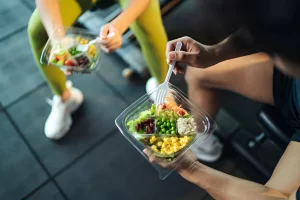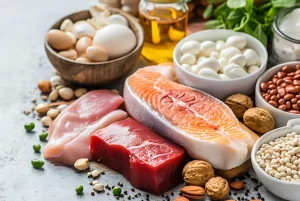How to Read Nutrition Labels the Right Way and Make Smarter Food Choices

Walk down any supermarket aisle and you’ll spot one thing almost every packaged food item has in common — a nutrition label. But here’s the catch: while these labels are designed to guide us toward healthier decisions, most people either skim them quickly or ignore them altogether.
The truth? Learning how to read and interpret nutrition labels is one of the most powerful skills you can develop for your health. It helps you shop smarter, eat better, and manage your fitness or weight goals with confidence.
Let’s break down exactly how to read these labels — step by step — so you never get fooled by clever marketing again.
1. Start with the Serving Size
The serving size is the foundation of the entire label. Every calorie count and nutrient breakdown is based on this number.
What to check:
- Calories and nutrients apply per serving, not per package.
- Many foods and drinks contain multiple servings, making it easy to underestimate intake.
Example: A soda bottle says 1 serving = 200ml, but the bottle contains 600ml. If you drink it all, you’ve actually had 3 servings worth of sugar and calories.
2. Look at the Calories
Calories tell you how much energy you’ll get per serving. They’re not “bad,” but consistently eating more than you burn leads to weight gain.
What to check:
- Calories per serving vs. total package.
- Your own daily needs, which depend on age, activity level, and health goals.
3. Understand the Macronutrients
Macronutrients — carbs, fats, and proteins — are the building blocks of your diet. Here’s how to decode them:
a. Carbohydrates:
Look at total carbs, sugars, added sugars, and fiber.
- Fiber keeps you full and supports digestion.
- Added sugars spike energy but crash quickly.
b. Fats:
- Saturated fats: Limit them, as they raise cholesterol.
- Trans fats: Aim for zero — they’re linked to heart disease.
- Unsaturated fats (from nuts, seeds, olive oil): Healthy in moderation.
c. Protein:
Essential for muscle repair, satiety, and energy.
Watch out: Many snacks are high in carbs/fats but very low in protein.
4. Check the Micronutrients
Vitamins and minerals are often overlooked but crucial for long-term health. Labels usually highlight:
- Vitamin D (immunity, bone health)
- Calcium (strong bones, muscles)
- Iron (energy, blood health)
- Potassium (heart health, blood pressure)
If most of your meals are packaged, ensure you’re still covering these needs through whole foods or supplements.
5. Decode the % Daily Value (%DV)
This number shows how much a nutrient in one serving contributes to your daily needs (based on a 2,000-calorie diet).
- 5% DV or less = Low
- 20% DV or more = High
Use this to quickly see if a food is giving you too much sodium or enough fiber.
6. Don’t Skip the Ingredient List
The ingredients often tell the real story. They’re listed in order of quantity, from most to least.
Red flags to avoid:
- Hidden sugars (look for names like dextrose, fructose, corn syrup).
- Hydrogenated oils (a source of trans fats).
- Artificial colors, flavors, and preservatives.
Rule of thumb: The shorter and simpler the ingredient list, the healthier the product.
7. Watch Out for Marketing Tricks
Front-of-package claims can be misleading. Words like “low-fat,” “natural,” or “organic” don’t always mean healthy.
Example: “Low-fat” yogurt might actually be packed with sugar. “Organic cookies” are still cookies — with plenty of calories.
Always flip the package and verify the claims against the actual label.
Nutrition labels are like a cheat sheet for better health — if you know how to read them. By taking just a few seconds to check serving sizes, calories, nutrients, and ingredients, you empower yourself to make food choices that align with your wellness goals.
Next time you grab a snack or ready-to-eat meal, flip it over, read carefully, and let the label guide you toward smarter, healthier decisions.











Comments are closed